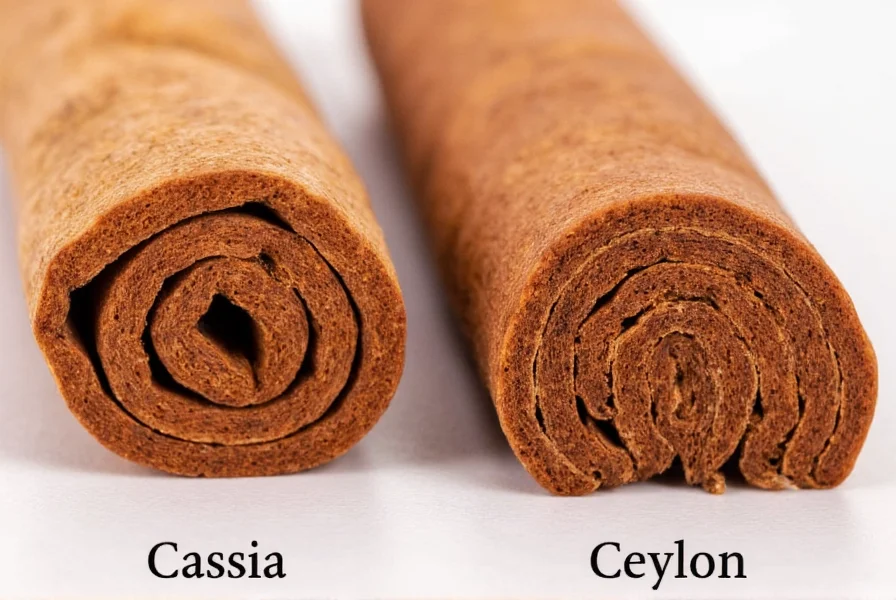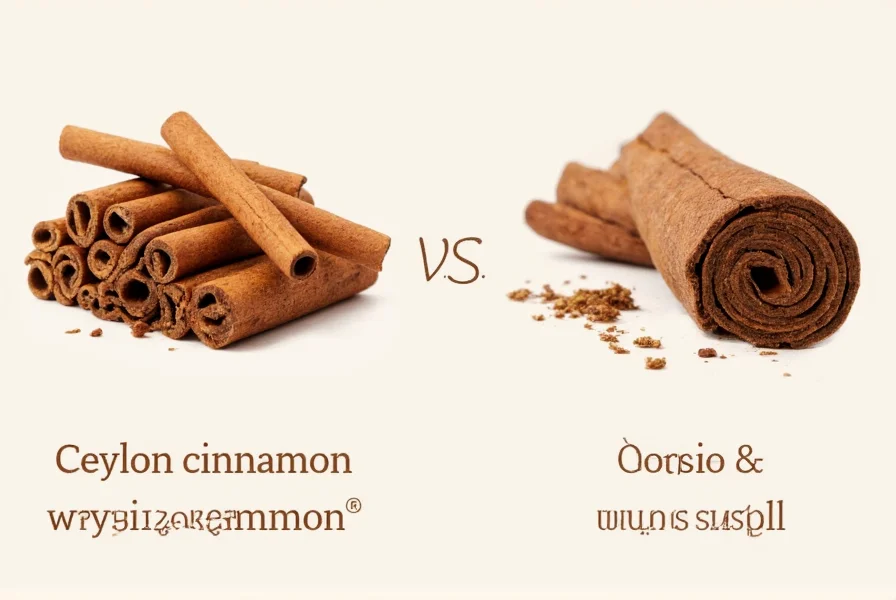When you reach for that spice jar labeled simply “cinnamon,” you’re likely using Chinese cinnamon (Cassia), not the “regular” cinnamon many expect. This common confusion stems from marketing practices that dominate the global spice trade. Let’s clarify the botanical realities, flavor profiles, and health implications of these two distinct spices.
What Is Chinese Cinnamon (Cassia)?
Chinese cinnamon, scientifically known as Cinnamomum cassia, originates from southern China but is now primarily cultivated in Indonesia, Vietnam, and China. This variety accounts for approximately 95% of cinnamon sold in the United States and is what most consumers recognize as “cinnamon.”
Cassia features thick, rough bark that forms a single, hard scroll when dried. It has a deep reddish-brown color and delivers a robust, spicy-sweet flavor with noticeable heat. The intense aroma makes it popular for baking and in spice blends like pumpkin pie spice.

What Is “Regular” Cinnamon (Ceylon)?
True cinnamon, or Ceylon cinnamon (Cinnamomum verum), comes primarily from Sri Lanka (formerly Ceylon), with additional production in Madagascar and the Caribbean. This variety represents only about 5% of the global cinnamon market but is considered “real” cinnamon by culinary experts.
Ceylon cinnamon displays delicate, paper-thin bark that forms multiple concentric layers when dried, resembling a cigar. It has a lighter tan color and offers a more complex, citrusy-sweet flavor profile with subtle floral notes and minimal heat. Professional bakers and pastry chefs often prefer Ceylon for its nuanced flavor that doesn’t overpower other ingredients.
Key Differences Between Chinese Cinnamon and Ceylon Cinnamon
| Characteristic | Chinese Cinnamon (Cassia) | Ceylon Cinnamon |
|---|---|---|
| Botanical Name | Cinnamomum cassia | Cinnamomum verum |
| Appearance | Thick, single scroll, rough texture | Thin, multiple layers, delicate texture |
| Flavor Profile | Strong, spicy, intense heat | Mild, sweet, citrusy, subtle floral notes |
| Coumarin Content | High (2,500-7,000 ppm) | Very low (50-150 ppm) |
| Price | Affordable ($2-4 per ounce) | Premium ($8-15 per ounce) |
| Global Market Share | Approximately 95% | Approximately 5% |
Health Implications: The Coumarin Factor
The most significant difference between Chinese cinnamon and Ceylon cinnamon lies in their coumarin content. Coumarin, a naturally occurring compound, can cause liver damage when consumed in large quantities over time.
Cassia contains 250-500 times more coumarin than Ceylon cinnamon. The European Food Safety Authority recommends a maximum daily coumarin intake of 0.1 mg per kilogram of body weight. For a 150-pound adult, this translates to approximately 1 teaspoon of Cassia cinnamon daily as the upper safe limit.
Individuals with liver conditions or those consuming cinnamon regularly in supplements should strongly consider switching to Ceylon cinnamon. This distinction represents one of the most important considerations when choosing between Chinese cinnamon versus cinnamon (Ceylon) for daily use.
Culinary Applications: When to Use Each Type
Understanding the flavor differences helps determine which cinnamon variety works best for specific recipes:
- Choose Cassia when: You need bold flavor that stands up to long cooking times (stews, braises), want pronounced spice in baked goods (snickerdoodles, cinnamon rolls), or are making spice blends where intensity is desired
- Choose Ceylon when: Creating delicate desserts (custards, flans), making beverages (chai, hot chocolate), preparing dishes where cinnamon should complement rather than dominate, or for daily consumption in smoothies or oatmeal
Professional chefs often use Cassia in savory applications and Ceylon in sweet preparations, though personal preference plays a significant role. When substituting one for the other, use about 1.5 times more Ceylon to achieve similar flavor intensity to Cassia.
How to Identify Authentic Ceylon Cinnamon
Spotting genuine Ceylon cinnamon requires attention to detail:
- Examine the sticks: Ceylon forms multiple thin layers like a rolled newspaper, while Cassia forms a single thick tube
- Check the color: Ceylon appears light tan to pale brown, whereas Cassia is dark reddish-brown
- Feel the texture: Ceylon is brittle and easily crumbles when bent; Cassia is hard and difficult to break
- Read the label: Look for “Ceylon cinnamon,” “Cinnamomum verum,” or “real cinnamon” rather than just “cinnamon”

Making the Right Choice for Your Needs
Selecting between Chinese cinnamon and true cinnamon depends on your specific requirements. For occasional baking where intense spice is welcome, Cassia works perfectly well. However, for daily consumption, health-focused applications, or refined culinary creations, Ceylon cinnamon provides superior safety and more nuanced flavor.
When shopping, don’t hesitate to ask vendors specifically which variety they carry. Many specialty spice shops now clearly label both types, recognizing growing consumer awareness about the differences between Chinese cinnamon versus cinnamon (Ceylon). Understanding these distinctions transforms your spice experience from generic to precisely tailored.











 浙公网安备
33010002000092号
浙公网安备
33010002000092号 浙B2-20120091-4
浙B2-20120091-4